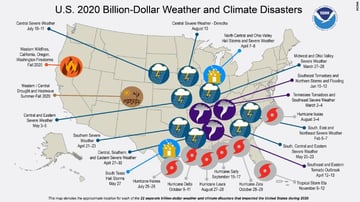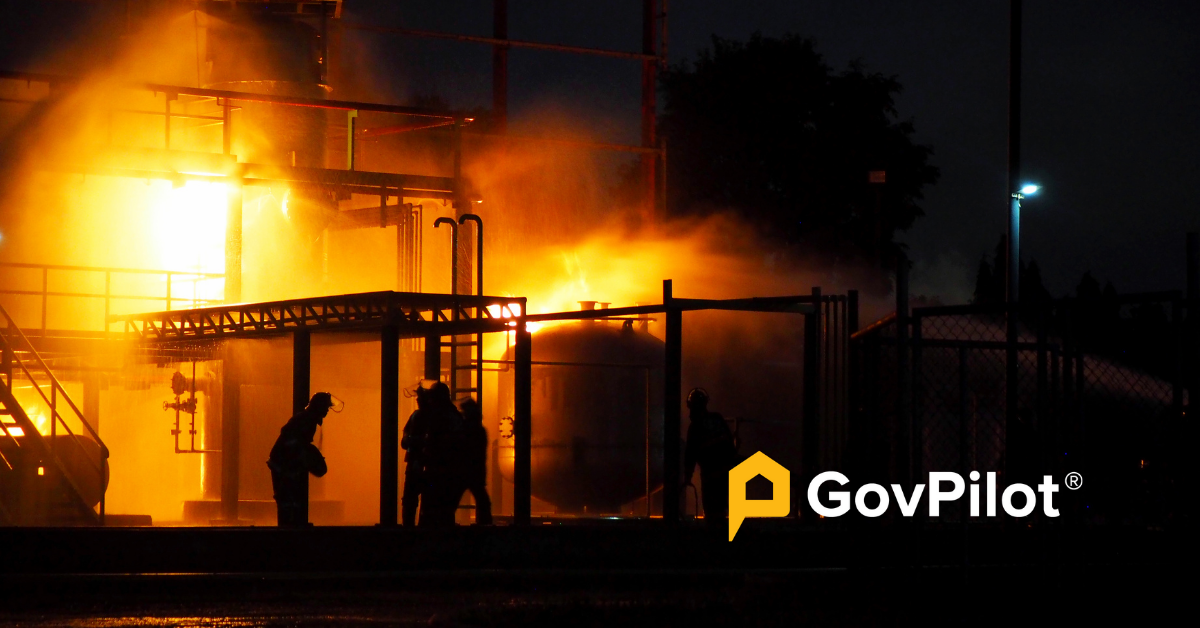When an emergency erupts in a community it can change the lives of both the people who live there and the people who govern there very quickly. How a community responds to an emergency can have lingering affects that can last weeks, months, years, or even longer. While we cannot always stop these events from happening, we can prepare as best as possible to react to them when they do happen.
Emergencies come in many forms, I break them down into two camps; The human caused emergency and the natural origin emergency. The human caused emergency can be anything from an Active Shooter, Cyber Security Hack, Civil Unrest, Lone Wolf Terrorist or a spike in crime. The natural origin emergency comes from the effects of the world we live in; public health emergencies, floods, hurricanes, earthquakes, tornadoes, wildfire’s, a major power outage, or any other life disrupting and endangering event. Both kinds of emergencies can be anticipated and prepared for effectively with proper emergency procedures and guidelines.
Either a human caused emergency, or a natural origin emergency can result in a loss of life or be devastating to infrastructure, business, and the economy. Emergency planners know that they can transform any locale from a beautiful place to live to one that slides into chaos or slowly decays under the weight of a traumatic incident.
Disaster Preparedness
Disaster Preparedness is not just a buzz word - it is a call to action. Unfortunately, over 60% of our businesses have no plans for responding to emergencies and our municipalities are not much better. In fact, it is hard to find any organization that has a plan for recovery after an event. While we all know we should prepare for disaster we can all get sidetracked with seemingly more pressing concerns.
Budgets, workforces, community needs, regulations, taxes and an unstable political climate can all affect how we prioritize emergency preparedness and an emergency operations plan.
If we look at incidents across the USA in just the past 12 months we see a long line of events big and small that have rocked, and destroyed, or almost destroyed entire cities: The crippling utility outage across Texas, the bombing in downtown Nashville, the riots and unrest in Washington DC, the riots and unrest in many American cities for a host of reasons, the defund the police movement, and the COIVD19 Pandemic and Lockdowns, the tornadoes in Alabama and so on. Each one tragic in its own right, and all coming from the two danger camps- Human Caused emergencies and Natural Origin emergencies. The towns and cities that suffered the most were the ones who were not prepared to respond.
 In 2020 there were 22 separate billion-dollar weather and climate natural disasters across the United States, shattering the previous annual record of 16 events, which occurred in 2017 and 2011. Effective mitigation, emergency response, and efficient, predictable recovery efforts are critical.
In 2020 there were 22 separate billion-dollar weather and climate natural disasters across the United States, shattering the previous annual record of 16 events, which occurred in 2017 and 2011. Effective mitigation, emergency response, and efficient, predictable recovery efforts are critical.
If we could guarantee that going forward there would-be peace and calm and clear weather across the nation, then getting ourselves, our agencies, our employees and our citizens prepared could be relegated to the last thing on the to-do list…
The Reality
But reality tells us that is not that case. The next horrifying mass shooting, explosion, deadly tornado outbreak, catastrophic flood, or crippling cyber-attack is only months, weeks or days away. We will be challenged again sooner rather than later.
The lessons of the past and message for today is clear, we cannot have healthy, thriving communities, effective economies, growing tourism, opportunity for all of our people or the smart cities of tomorrow if we don’t have a safe and secure neighborhood or workplace first. The time to prepare is now.
This is where we can draw some comfort: developing emergency plans of value, conducting vulnerability and risk assessments, establishing evacuation routes - from buildings and cities - creating protocols that actually work to limit or eliminate weaknesses and training our personnel, employees, and citizens to recognize potential dangers and how to react if those dangers strike has never been easier, all it takes is making this a priority and finding resources that are available.
Emergency preparation and safety and security groups are growing to meet the needs of our towns and cities. The knowledge base of expertise related to preparedness has never been greater and the practitioners of best practices are no longer hard to find for those who want to find them.
The Department of Homeland Security (DHS), Federal Emergency Management Agency (FEMA), Health and Human Services (HHS), and many of our states have gone to great lengths to research and document these “Best Practices” and explore new technology that can be a greatly improve emergency services - things like artificial intelligence (AI) and training concepts that can change the old paradigms about creating safe spaces and safe cities. This information is needed and available, but implementing it is not always easy and it is here where many towns and cities struggle.
A clear review of the struggle reveals this is the hard part and where the problem exists. It is in the coordination and execution phase, from a governing body's desire to be safer and prepared, to obtaining the knowledge, skills, and experience to discern what is valuable equipment, what has the best return on investment (ROI), what are the best, most affordable ways to provide training, how to effectively prepare to respond to emergencies and how to implement and act on these critical elements of a safe, smart city.
While we all might hope the Federal government or our state will step in and do this for us, or at least provide positive, on-scene guidance and experts to help us achieve our goals; experience tells us that will not be what happens. We will have to find our own help that allows us to prepare our responses and secure our own towns and cities in the most economically feasible way.
Suggestions
Here are three things to look for in an outside organization that can help you implement actionable disaster planning and continuity of operations:
1. Experience in creating safety and security plans for various hazards and all the different groups in your care to include: Schools, Businesses, Municipal Workers, Building Occupants, Religious facilities, First Responders, EMS and OEM teams, and shelter personnel.
2. A complete and thorough understanding of the myriad equipment and applications available today and access to state of the art, AI driven IOT technology as well as knowing what is really needed, not just what looks nice or sounds good in a slick sales pitch.
3. A team to work with you that is adaptable, nimble, smart, and has a desire to be a part of your planning process. A team of trainers that connects to people and ensures the checklists, learning and training provided is absorbed by your staff.
If you find an organization that can do these three things, you are well on your way to making your community a safer, and smarter city.
Joseph Pangaro is the Chief Security Officer and Director of Global Training for the True Security Design company, and is a member of GovPilot's Advisory Board.









